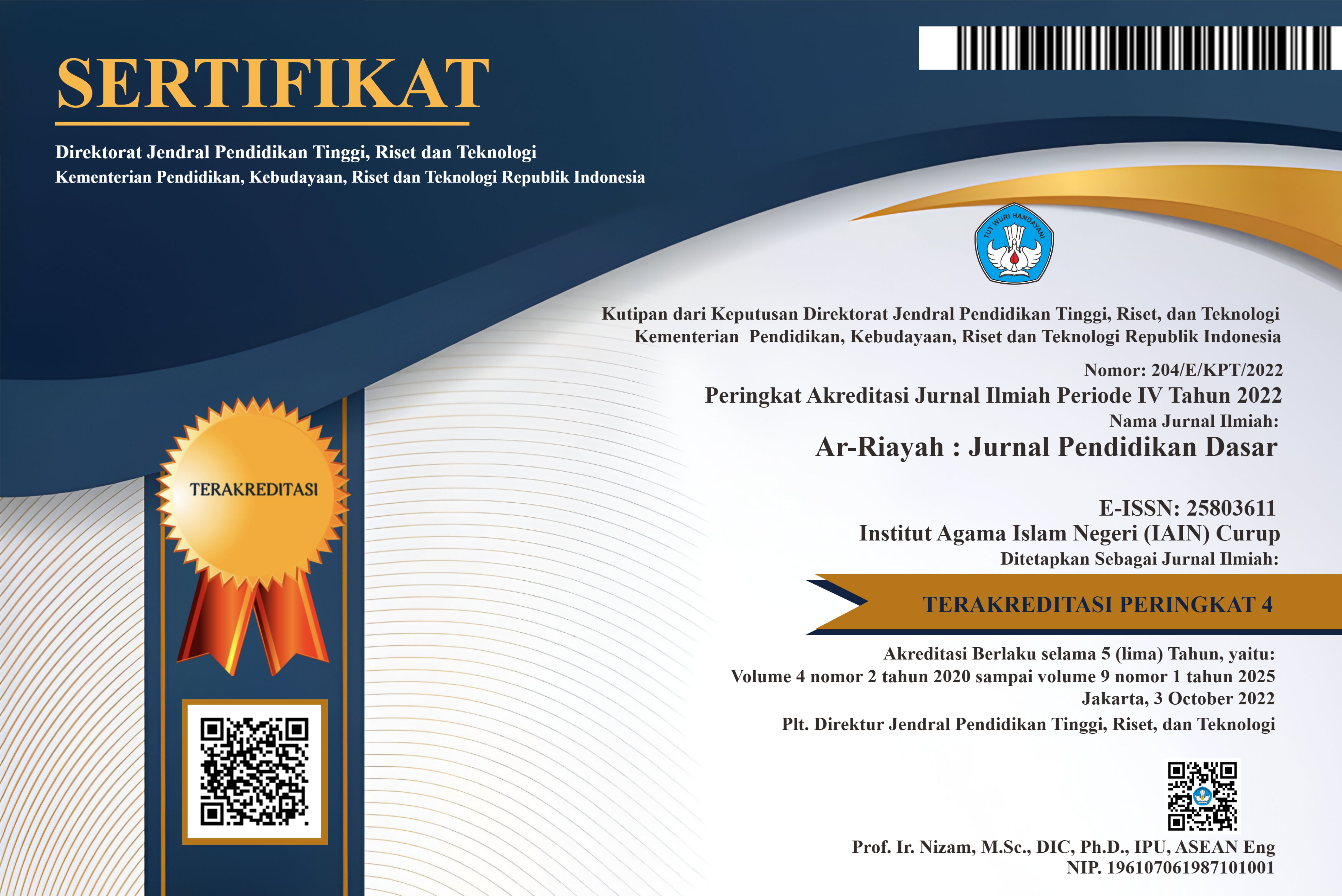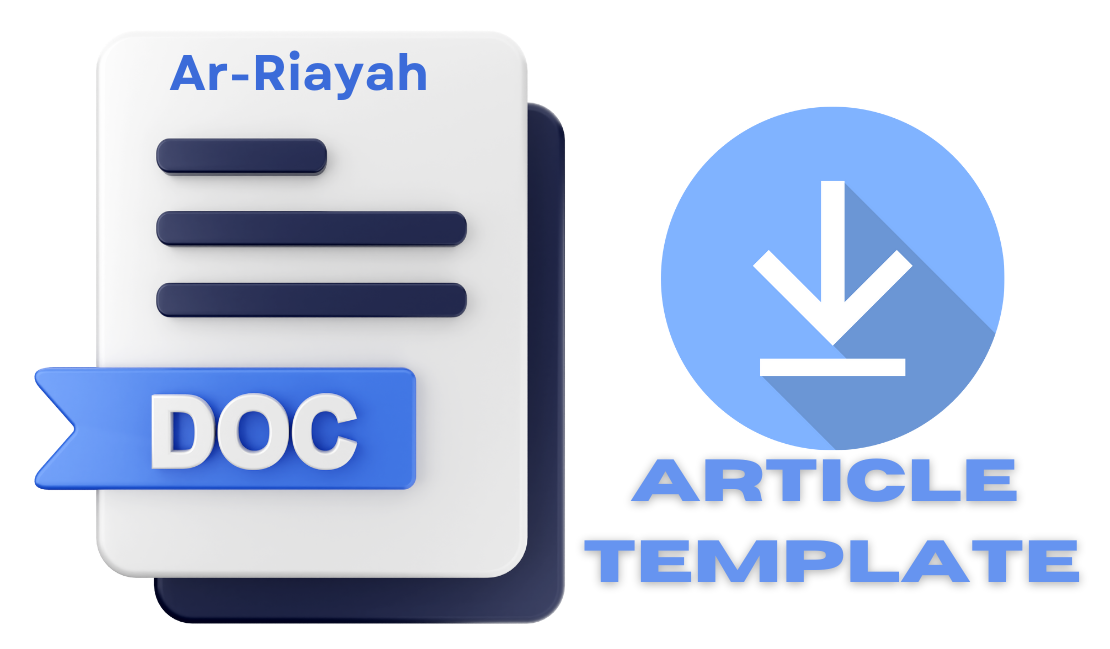Urgensi Pengembangan Buku Dongeng Movable Berbasis Etnosains Sebagai Bahan Ajar Penunjang Pembelajaran Ipa Siswa Kelas
DOI:
https://doi.org/10.29240/jpd.v5i1.2683Keywords:
Learning Materials, Movable Books, Ethnoscience, Elementary School Science LearningAbstract
Transforming textbooks into something interesting and fun for students is now increasingly interesting to study in line with the increasing number of challenges creating children's interest for reading. In order to have an attractive value for children, textbooks need to be specially prepared with a child's point of view which is of course adjusted to the character and level of children's development, learning needs, and the socio-cultural environment. This research is a descriptive qualitative study that aims to identify the urgency of developing ethnoscience based movable fairytale book to support science learning in grade IV Elementary students. This research is a descriptive qualitative study using observation, interview, and questionnaire techniques in data collection. The data analyzed using descriptive analysis techniques according to Miles & Huberman. The results of the study showed that textbooks that support learning are still limited, reading activities are the most preferred activity during learning but not in leisure, and ethnoscience-based movable fairytale book very hoped to be developed.
Downloads
References
Abrahamson,R.F & Stewart, R.(1982). Movable Books—A New Golden Age. NCTE, 59(4)
Ahyani, L. N., & Kudus, U. M. (2010). Metode Dongeng Dalam Meningkatkan Perkembangan. Jurnal Psikologi
Badan Pusat Statistik. (2019). Statistik Telekomunikasi Indonesia 2018
Bua, Santoso, & Hasanah. (2016). Analisis Minat Membaca Permulaan dengan Cerita Bergambar di Kelas I Sekolah Dasar. Jurnal Pendidikan: Teori, Penelitian, dan Pengembangan
Bundsgaard & Hansen. (2011). Evaluation of Learning Materials: A Holistic Framework. Journal of Learning Design
Depdiknas. (2008). Panduan Pengembangan Bahan Ajar. Jakarta: Departemen Pendidikan Nasional.
Downie, R. (2001). Science and the Imagination in the Age of Reason.
Dyk, S.V & Hewitt, C. (2011). Paper Engineering: Fold, Pull, Pop, & Turn. Washington DC: Smithsonian Institution.
Ermanda, S. & Ariandani, N. (2020). Pengembangan Bahan Ajar IPA Berbasis Lingkungan Di Sekolah Dasar Negeri 3 Jenggik Tahun Pelajaran 2017/2018. BADA’A: Jurnal Ilmiah Pendidikan Dasar
Faradina, N. (2017). Pengaruh Program Gerakan Literasi Sekolah terhadap Minat Baca Siswa di SD Islam Terpadu Muhammadiyah An-Najah Jatinom Klaten. Jurnal Hanata Widya 6
Fasasi, R.A. (2017). Effects of Ethnoscience Instruction, School Location, and Parental Educational Status on Learners’ Attitude Towards Science, International Journal of Science Education
Harsono, Y. M. (2007). Developing Learning Material for Specific Purpose. TEFLIN Journal
Huck, C.S., Hepler, S., & Hickman, J. (1987). Children’s Literature in The Elementary School. New York: Holt, Rinehart and Wiston.
Kemdikbud. (2017). Hasil Indonesian National Assesment Programme (INAP).
Kementrian Pendidikan dan Kebudayaan Republik Indonesia. (2016). Desain Induk Gerakan Literasi Sekolah. Jakarta: Depdikbud.
Klein, G. (2002).Reading into racism: bias in children’s literature and learning materials. New York: Taylor & Francis
Krisiandi. (15 Desember 2016).Daya Imajinasi Siswa Lemah. Harian Kompas
Marcus, L.S. (2013). Pop-Ups on Parade: Art, Novelty, and the Book Reimagined. New York: IPCNY
McLain,M., McLain,M., Tsai,J., Martin,M., Bell,D., & Wooff, D. (2016). Traditional Tales and Imaginary Contexts in Primary Design and Technology: A case study. Design and Technology Education Journal
Mendikbud. (2019). Mengejar ke Barat, Utara, dan Timur. Retrieved from https://indonesia.go.id/kategori/indonesia-dalam-angka/1013/mengejar-ke-barat-utara-dan-timur
Nurgiyantoro, B. (2013). Sastra Anak. Yogyakarta: Gadjah Mada University Press
OECD. (2018). Indonesia-Country Note – Results from PISA 2015
Prastowo, A. (2014). Pengembangan Bahan Ajar Tematik:Tinjauan Teoritis dan Praktik. Jakarta: Kencana Prenada Media Group
Sarlatto, M. (2016). Paper Engineers and Mechanical Devices of Movable Books of The 19th and 20th Centuries
Schunk, D. (2012). Learning Theories An Educational Perspectives:Teori Pembelajaran Perspektif Pendidikan Edisi Keenam. Penerjemah: Eva Hamdiah & Rahmat Fajar. Yogyakarta: Pustaka Pelajar
Syofyan, H., Zulela, & Sumantri, M.S. (2019). Pengembangan Awal Bahan Ajar IPA Di Sekolah Dasar. JPD: Jurnal Pendidikan Dasar
Tianisa, W. T. (2017). Analisis Kebutuhan Buku Ajar Matematika Berbasis Model Pembelajaran Guided Discovery. The 5th Urecol Prosiding. Universitas Ahmad Dahlan
Triatma, I.N. (2016). Minat Baca pada Siswa Kelas VI Sekolah Dasar Negeri Delegan. E-Jurnal Prodi Teknologi Pendidikan
Vate-U-lan, P. (2011) Augmented Reality 3D Pop-up Children Book: Instructional Design for Hybrid Learning. Proceedings of IEEE International Conference, Melbourne
Wardani, P. T., Alwi, M., & Hakim, A. R. (2020). Pengembangan Bahan Ajar Ipa Kelas V Sekolah Dasar Menggunakan Multimedia Interaktif Berbantuan Animasi. Prima Magistra: Jurnal Ilmiah Kependidikan
Downloads
Published
How to Cite
Issue
Section
Citation Check
License
Authors who publish with Ar-Riayah: Jurnal Pendidikan Dasar agree to the following terms:
Authors retain copyright and grant the journal right of first publication with the work simultaneously licensed under a Creative Commons Attribution-NonCommercial-ShareAlike 4.0 International License (CC BY-NC-SA 4.0) that allows others to share the work with an acknowledgment of the work's authorship and initial publication in this journal.
Authors are able to enter into separate, additional contractual arrangements for the non-exclusive distribution of the journal's published version of the work (e.g., post it to an institutional repository or publish it in a book), with an acknowledgment of its initial publication in this journal.
- Authors are permitted and encouraged to post their work online (e.g., in institutional repositories or on their website) prior to and during the submission process, as it can lead to productive exchanges, as well as earlier and greater citation of published work (See The Effect of Open Access).










